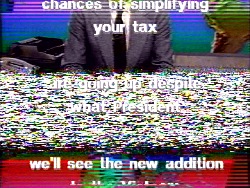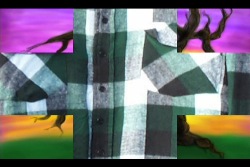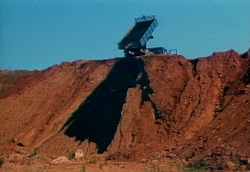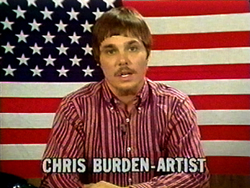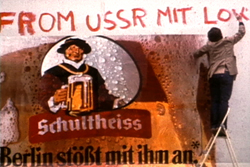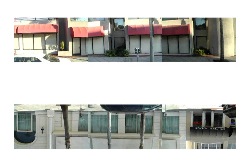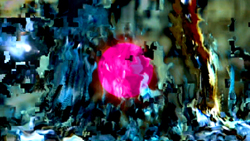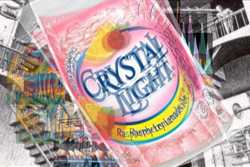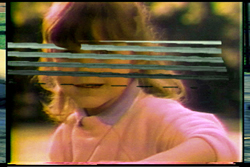
OUT OF PRINT
EAI Video Program at the NY Art Book Fair
OUT OF PRINT
EAI Video Program at the NY Art Book Fair
Phillips de Pury & Company
450 West 15th Street at 10th Avenue, 3rd Floor
(between 9th & 10th Avenues)
New York City
OUT OF PRINT
EAI Video Program at the NY Art Book Fair
Phillips de Pury & Company
450 West 15th Street at 10th Avenue, 3rd Floor
(between 9th & 10th Avenues)
New York City
OUT OF PRINT
EAI Video Program at the NY Art Book Fair
Phillips de Pury & Company
450 West 15th Street at 10th Avenue, 3rd Floor
(between 9th & 10th Avenues)
New York City
Works
Composed entirely of film scraps salvaged from a closed Beirut cinema, this is a collage of sensational visions. Writes Ed Halter: "Outtakes appears to be a ready-made...pre-filled with Ahwesh's signature elements: gleeful disruptions of high and low, affection for decayed textures, a peeping eye for lurid sexuality, and a fascination with unlikely images of the Middle East. Just one sequence of a go-go-booted belly dancer wriggling in an Arabic-language cinema advertisement for home air conditioners alone has the power to shatter more stereotypes than 500 pages of Edward Said."
This video was created and released into distribution as one work in a solo exhibition that Price held simultaneously at Friedrich Petzel Gallery, Reena Spaulings Fine Art, and Electronic Arts Intermix in New York in September 2006. The video serves as a sampler of Price's editioned videos to date, all of which have been sold through the galleries. Here, fragments of sound and image from the editions have been brought together, yielding a montage that, while bordering on incoherence, provides access to these publicly unavailable artworks. Price juxtaposes disparate authors, editing strategies, and histories, yielding a work in the essay-film tradition, at once lyrical and messy, highly-edited and arbitrarily composed.
In a collusion of text and image, Rosler re-presents the NBC Nightly News and other broadcast reports to analyze their deceptive syntax and capture the confusion inserted intentionally into the news script. The artist questions the fallibility of electronic transmission by emphasizing the...
Gordon Matta-Clark's Fake Estates project, which dates from 1973-74, addresses issues of property, ownership, and urban spaces. For this project, Matta-Clark purchased fifteen small, unusable odd lots — termed "gutterspaces" — that were being auctioned off by the city of New York. Although the artist collected extensive archival documents relating to the properties, his plans for using them were never realized; after his death the lots reverted to the city. This historical footage, shot by video artist and cable television pioneer Jaime Davidovich, documents Matta-Clark as he visits one of the sites in Queens.
Refuses began as a visual extension of Carolyn Bergdahl's poem Fuses (after Carolee Schneemann), which speaks to Schneemann's taboo-shattering 1964-66 film. In Donegan's silent collage of seemingly disparate images culled from Internet searches and home video footage, each new clip directly corresponds to a word in the Bergdahl poem; the apparent stream of consciousness is governed by a rigorous set of rules.
This short documentary presents an overview of those works by Robert Smithson that involved the pouring of viscous substances such as glue, asphalt and cement. A voiceover commentary by the artist helps explain some of his specific concerns in making these works, as well as elucidating his more general interests in entropy, geologic time, anti-form, the use of industrial materials, and the positioning of the artwork in the land as opposed to the gallery.
The TV Commercials is a recent compilation of Burden's four legendary television interventions, which date from 1973 to 1977. For each of these conceptual projects, Burden purchased commercial time on broadcast television and aired his own subversive "ads." Included are TV Ad: Through the Night Softly; Poem for L.A.; Chris Burden Promo, and Full Financial Disclosure.
This newly assembled work is a rare document of a 1976 Matta-Clark performance in Berlin. The piece begins with the following statement: "In 1976, as part of the Akademie der Kunst and Berliner Festwochen exhibition 'Soho in Berlin,' Gordon Matta-Clark went to Germany with the intention of blowing up a section of the Berlin Wall. Dissuaded by friends from such a suicidal action, the result was the following performance." The film records Matta-Clark as he stencils 'Made in America' on the Wall, affixes commercial advertisements over graffiti, and has a run-in with the police.
Three Slideshows After Ed Ruscha and The Networked Computer
Michael Bell-Smith
2006, 7:07 min, color, silent
Writes the artist: "The idea behind these pieces was to re-imagine the approaches to photography and the archive Ed Ruscha displayed in his books, through the lens of a post-personal computer, post-Internet, post-Google image search age." To do so, Bell-Smith arranged images sourced from the Internet into three Powerpoint slideshows.
Turning Some Pages was produced in conjunction with the printing of a limited edition journal of the same name by the Howard Smith Paper Group, a British paper merchant. The action of reading a book informs the structure of this digital motion drawing, in which abstract arrangements of graphic shapes and images of dice are interspersed with cryptic aphorisms.
Murata transforms footage from the 1982 Sylvester Stallone film Rambo: First Blood into a morass of seething electronic abstraction. Subjected to Murata's meticulous digital reprocessing, the action scenes decompose and are subsumed into an almost palpable, cascading digital sludge, presided over by a hypnotically pulsating pink dot.
Waiting for Commercials
Nam June Paik and Jud Yalkut
1966-72, 1992, 6:41 min, color, sound, 16 mm film on video
Part of a restored collection of rare early works by Nam June Paik, Waiting for Commercials is a hilarious compendium of Japanese TV commercials. This early example of Paik's use of appropriated television imagery as pop cultural artifact was originally created for a performance piece of the same name, which featured Charlotte Moorman and her cello.
Westkunst (Modern Period): Dan Graham Segment
Dan Graham and Ernst Mitzka
1980, 7:10 min, color, sound, In German and English.
Graham's analysis of the ideological and social function of urban and suburban architectural spaces, and the role of television in private and public spaces, is featured in this segment of a West German film on contemporary artists. Documentation and illustrations of the concepts and format of...
Moulton again performs as her alter-ego Cynthia in the latest episode of the Whispering Pine series. Fueled by the sugar-free drink Crystal Light, Cynthia methodically fills a vase with alchemical home decorating items. Once her project is completed, Cynthia is again left to dwell in her thoughts. Suddenly a ladder grows out of the vase. Cynthia climbs the ladder and, through a trap door, enters an ecstatic rave complete with a techno remix of the Crystal Light commercial music.


